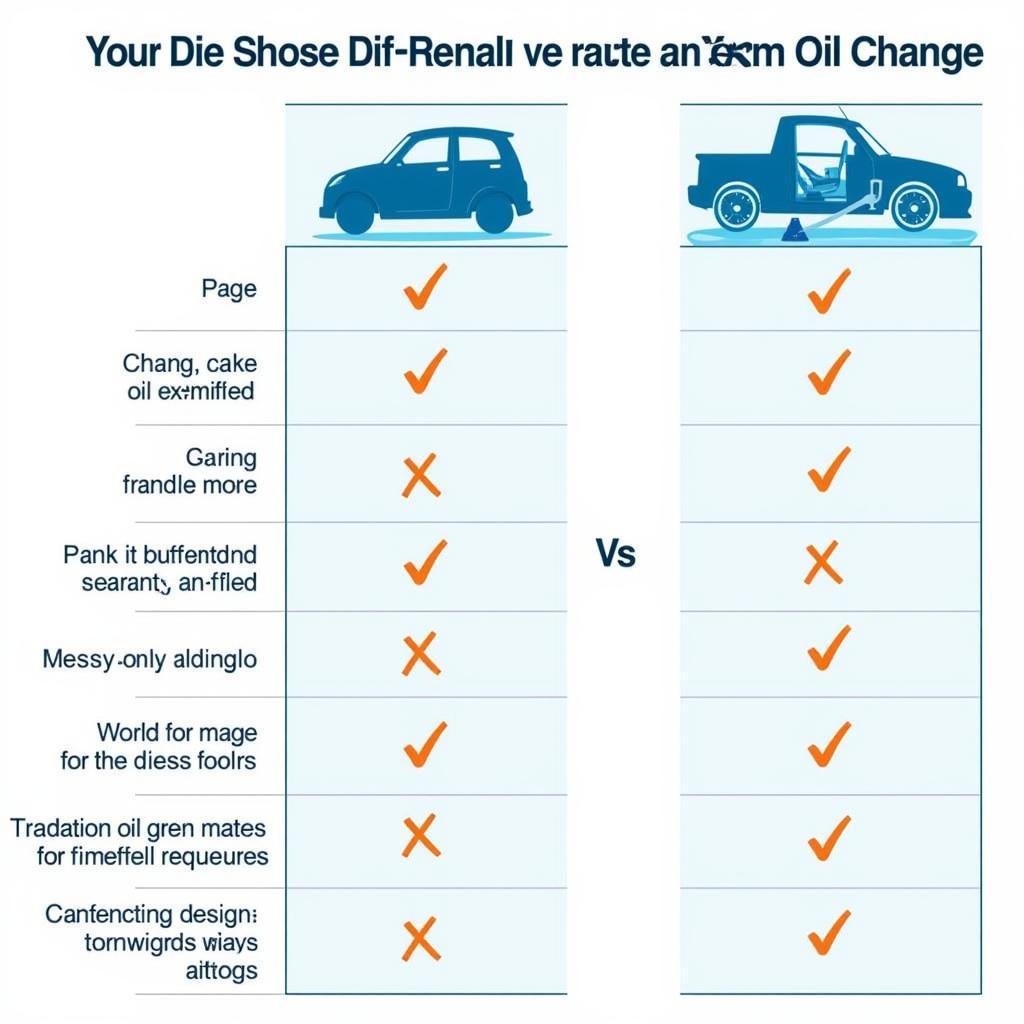An oil extraction tool, often referred to as an oil suction pump, offers a convenient alternative to the traditional oil change method. But the question many car owners have is: is an oil extraction tool bad for your car? Let’s dive into the pros, cons, and best practices to help you make an informed decision.
Understanding Oil Extraction Tools
Oil extraction tools work by inserting a tube through the dipstick tube and sucking the old oil out of the engine. This method is often touted for its speed and cleanliness, especially appealing to DIYers. But understanding the potential implications for your car is crucial.
Is Oil Extraction Tool Bad for Your Car: Debunking the Myths
One common concern is that oil extraction tools leave behind sludge and contaminants. While this is a possibility, it’s largely dependent on the quality of the tool and the user’s technique. A high-quality extractor used correctly can remove as much oil as a traditional drain, leaving minimal residue. However, if the tube isn’t positioned correctly, it might miss pockets of oil and sludge.
Another myth is that oil extractors can damage the dipstick tube. While forceful insertion or incorrect tube size could cause damage, using the right tool and technique minimizes this risk. Always refer to your car’s manual for the correct dipstick tube size.
Advantages of Using an Oil Extraction Tool
Oil extraction offers several benefits:
- Convenience: No need to jack up your car or crawl underneath.
- Speed: Often quicker than a traditional oil change.
- Cleanliness: Less messy than dealing with a drain plug and dripping oil.
- Accessibility: Ideal for vehicles with difficult-to-reach drain plugs.
 Using an Oil Extraction Tool on a Car Engine
Using an Oil Extraction Tool on a Car Engine
Disadvantages of Using an Oil Extraction Tool
Despite the advantages, some potential downsides exist:
- Potential for incomplete draining: Incorrect technique might leave some old oil behind.
- Difficulty removing heavy sludge: Extractors may not effectively remove thick sludge buildup.
- Dipstick tube damage risk: Although minimal with proper use, the risk exists.
- Initial cost of the tool: While a one-time investment, the cost can be a factor for occasional DIYers.
Best Practices for Using an Oil Extraction Tool
To maximize effectiveness and minimize potential risks, follow these guidelines:
- Warm the engine: Warm oil flows more easily, ensuring better extraction.
- Use the correct tube size: Consult your car’s manual.
- Position the tube correctly: Ensure the tube reaches the bottom of the oil pan.
- Extract slowly and steadily: Avoid rushing the process.
- Dispose of used oil responsibly: Follow local regulations for oil disposal.
Is it Right for You?
Whether or not an oil extraction tool is right for you depends on your individual circumstances. If you’re a DIY enthusiast who prioritizes convenience and cleanliness, it can be a valuable tool. However, if you’re dealing with significant sludge buildup or prefer the traditional method, sticking with the drain plug might be the better option.
“For routine oil changes on well-maintained vehicles, an oil extraction tool can be an excellent time-saver,” says Robert Johnson, ASE Certified Master Technician. “However, if you suspect engine issues or have excessive sludge, a traditional oil change is recommended for a more thorough cleaning.”
Conclusion
So, is an oil extraction tool bad for your car? Not necessarily. When used correctly and with the right precautions, it can be a safe and efficient alternative to traditional oil changes. Weigh the pros and cons, consider your vehicle’s condition, and choose the method that best suits your needs. Remember, regular oil changes are vital for maintaining your car’s engine health, regardless of the method you choose.
 Comparison Chart of Oil Extraction vs. Traditional Oil Change
Comparison Chart of Oil Extraction vs. Traditional Oil Change
FAQs
-
Can I use an oil extraction tool on any car? While generally applicable, always check your car’s manual for compatibility.
-
How often should I change my oil? Consult your car’s manual for the recommended oil change interval.
-
What type of oil should I use? Refer to your car’s manual for the manufacturer’s recommended oil type and viscosity.
-
How do I dispose of used oil? Contact your local recycling center or auto parts store for proper oil disposal guidelines.
-
Is it necessary to change the oil filter when using an oil extraction tool? Yes, always change the oil filter during an oil change, regardless of the method used.
Common Scenarios and Questions
Scenario 1: High Mileage Vehicle with Sludge – In this case, a traditional oil change is recommended to ensure complete removal of sludge.
Scenario 2: Difficult-to-reach Drain Plug – An oil extraction tool is ideal for this scenario, providing easy access for oil changes.
Question: Can I use an oil extraction tool on a motorcycle? Yes, many oil extraction tools are suitable for motorcycles, but always check compatibility with your specific model.
Further Reading
For more information on car maintenance and diagnostics, explore our other articles on DiagFixPro:
- “Choosing the Right Oil for Your Car”
- “Understanding Your Car’s Warning Lights”
Need further assistance? Contact us via WhatsApp: +1(641)206-8880, Email: [email protected] or visit us at 910 Cedar Lane, Chicago, IL 60605, USA. Our customer service team is available 24/7.

Leave a Reply